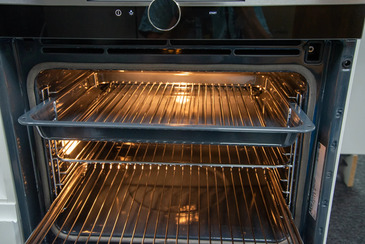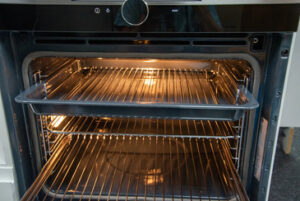Introduction
When it comes to cooking, people have a wide range of options to choose from, including microwaves and convection steam ovens. Both appliances have their advantages and disadvantages, and it is important to understand these before deciding which one to use. In this article, we will compare convection steam ovens and microwaves, discussing their features, pros, and cons, and answering some frequently asked questions about these appliances.

Convection Steam Oven
A convection steam oven is a high-end kitchen appliance that combines the power of steam with convection heating. It is an ideal appliance for cooking a wide range of foods, including meats, vegetables, and even baked goods. The steam function of the oven keeps the food moist and juicy, while the convection heating ensures that the food is cooked evenly and thoroughly.
Pros of Convection Steam Ovens
- Versatility: Convection steam ovens offer a range of cooking options, including steam, convection, and a combination of both. This makes it possible to cook a wide range of foods with just one appliance.
- Healthier cooking: Cooking with steam is a healthier option than cooking with oil or fat, as it keeps the food moist and juicy without the need for added fats.
- Retains Nutrients: Steaming also helps to retain the nutrients in the food, ensuring that your meals are not only delicious but also nutritious.
- Faster cooking: Convection steam ovens cook faster than traditional ovens, which means you can have your meals ready in less time.
- Energy Efficient: Because convection steam ovens cook faster than traditional ovens, they use less energy, making them an energy-efficient choice.
Cons of Convection Steam Ovens
- Price: Convection steam ovens are expensive, making them an investment for many households.
- Learning curve: Cooking with a convection steam oven can take some getting used to, as it is a different cooking method than traditional ovens or microwaves.
- Size: Convection steam ovens are larger than microwaves, which can be a problem for those with limited counter or kitchen space.
Microwave
The microwave is a kitchen appliance that uses electromagnetic radiation to heat and cook food. It is a popular appliance in many households and is often used to reheat leftovers or cook simple meals quickly.
Pros of Microwaves
- Convenience: Microwaves are quick and easy to use, making them ideal for those who have busy schedules or need to prepare meals quickly.
- Price: Microwaves are affordable, making them an excellent choice for those on a budget.
- Size: Microwaves are small and compact, making them ideal for those with limited counter space.
- Even Heating: Microwaves heat food evenly, ensuring that it is cooked thoroughly.
Cons of Microwaves
- Health concerns: There have been concerns about the safety of microwaves and the potential harm they may cause to food and the environment.
- Limited cooking options: Microwaves have limited cooking options and are not suitable for cooking certain foods, such as meats or baked goods.
- Nutrient Loss: Microwaving can lead to nutrient loss in food.
- Texture: Microwaving can cause food to become rubbery or chewy, which may not be desirable for some.
Convection Steam Oven vs Microwave FAQs
Is it safe to cook in a microwave?
Can a convection steam oven replace a traditional oven?
Can a microwave replace a convection steam oven?
Which appliance is better for cooking healthy meals?
Can a convection steam oven be used to reheat leftovers?
Conclusion
In conclusion, convection steam ovens and microwaves are two popular kitchen appliances that offer different features and benefits. While convection steam ovens are versatile, healthier, and offer a range of cooking options, they are more expensive and have a learning curve. Microwaves are convenient, affordable, and ideal for quick meals but have limited cooking options and can lead to nutrient loss. It is important to understand the pros and cons of each appliance before deciding which one to use for your cooking needs.
